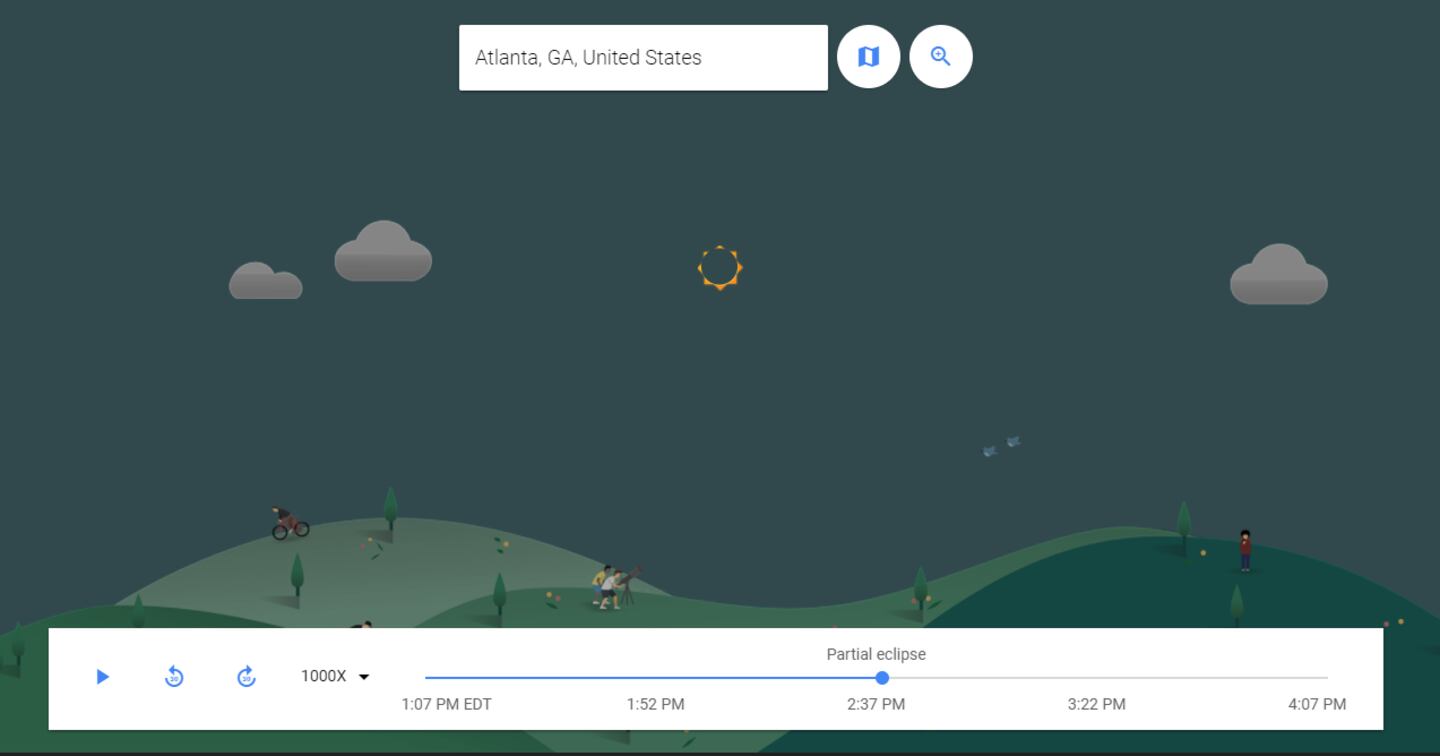The nation witnessed the first total solar eclipse to cross the country coast to coast in nearly 100 years.
The sun, the moon and planet Earth all aligned as space junkies reveled in the celestial spectacle that had everyone talking.
WSB-TV is your home for everything Total Solar Eclipse. We’ll have exclusive content and everything you need to know leading up to the big day on Aug. 21!
Then, when the Total Solar Eclipse crosses through the United States, make sure you’re relying on Channel 2 Action News for complete LIVE coverage from across the country!
Be sure to LIKE us on Facebook, FOLLOW us on Twitter and download the free WSB-TV news app to receive our latest content!
Due to its rarity, astronomers are calling the 2017 phenomenon the Great American Eclipse.
Here are seven things to know about the big event:
The Great American Eclipse will cross the U.S. on Aug. 21, and will begin in Oregon at 10:15 a.m. local time (1:15 p.m. EST). The eclipse's path of totality will cut a 60-mile-wide arc across the country and end in South Carolina about an hour and a half later.
NASA data visualizer Ernie Wright recently published the most accurate map to date of the eclipse's path of totality using data from NASA's Lunar Reconnaissance Orbiter, elevation data on Earth and information on the sun's angles.
Whether or not you’re inside the path of totality will determine what you see in the sky. If you’re outside the path, you’ll likely see a partial (not total) eclipse.
To determine the most accurate eclipse path, according to Wright, you have to figure out where the moon's shadow will fall on the Earth's surface, which requires taking into account the elevation differences on both the moon and Earth's surfaces, he told Space.com.
Using elevation data from NASA’s Shuttle Radar Topography Mission, the locations of the Earth, moon and sun at each line of latitude or longitude and how long it takes sunlight to travel to the moon and down to Earth, Wright was able to compute where exactly the eclipse will cross and for how long.
Scientists at the University of California, Berkeley, teamed up with Google to create a simulator that shows you what the sky will look like wherever you are.
All you have to do is type in your hometown or zip code and the simulator will tell you how much of the sun will be blocked by the moon, how the sun will travel across the sky over a three-hour period on Aug. 21 and what time to watch.
This simulator is part of the Eclipse Megamovie Project, a Google-Berkeley collaboration aimed at collecting and stitching together thousands of photos of the Aug. 21 eclipse taken by volunteer photographers around the country
The August eclipse will be incredibly accessible to anyone within a 200-mile drive of its path of totality, but the most important factor in getting a good view is weather.
But if you're hoping to make a trip out of the big event, Greatamericaneclipse.com has a list of 10 great places to see the phenomenon based on the best weather odds for clear skies:
Madras, Oregon: Totality begins at 10:19 a.m. PDT and lasts 2 minutes, 4 seconds.
Snake River Valley, Idaho: Totality begins at 11:33 a.m. MDT and lasts 2 minutes, 18 seconds.
Casper, Wyoming: Totality begins at 11:42 a.m. MDT and lasts 2 minutes, 4 seconds.
Sandhills of western Nebraska: Totality begins at 11:49 a.m. MDT and lasts 2 minutes, 30 seconds.
St. Joseph, Missouri: Totality begins at 1:06 p.m. CDT and lasts 2 minutes, 39 seconds.
Carbondale, Illinois: Totality begins at 1:20 p.m. CDT and lasts 2 minutes, 41.6 seconds.
Hopkinsville, Kentucky: Totality begins at 1:24 p.m. CDT and lasts 2 minutes, 41.2 seconds.
Nashville, Tennessee: Totality begins at 1:27 p.m. CDT and lasts 1 minute, 57 seconds.
Great Smoky Mountains National Park: Totality begins at 2:35 p.m. EST and lasts 1 minute, 17 seconds.
Columbia, South Carolina: Totality begins at 2:43 p.m. EST and lasts 2 minutes, 30 seconds.
Plan on traveling within or from Georgia? Head to Rabun County, about two hours north of metro Atlanta, where the eclipse will begin at 2:35 p.m. and last 2 minutes and 40 seconds.
The area is also holding an array of events to commemorate the phenomenon.
Other accessible road trips from Georgia include the Great Smoky Mountains; Columbia, South Carolina and Nashville, Tennessee.
If you plan on seeing the spectacle in person, Space.com has helpful safety tips.
Channel 2 Action News and WSBTV.com will bring you LIVE coverage from across the country.
NASA will be hosting an Eclipse Megacast across multiple programming venues, including NASA TV, YouTube, UStream and more.
The total solar eclipse of July 11, 1991 in Hawaii was the last to touch U.S soil, but the Feb. 26, 1979 eclipse — 38 years ago — was the last visible within the continental United States.
The next North American total solar eclipse will be on April 8, 2024, and will begin in Mexico, make its way through Texas to Maine and eventually end in Canada.
Cox Media Group






